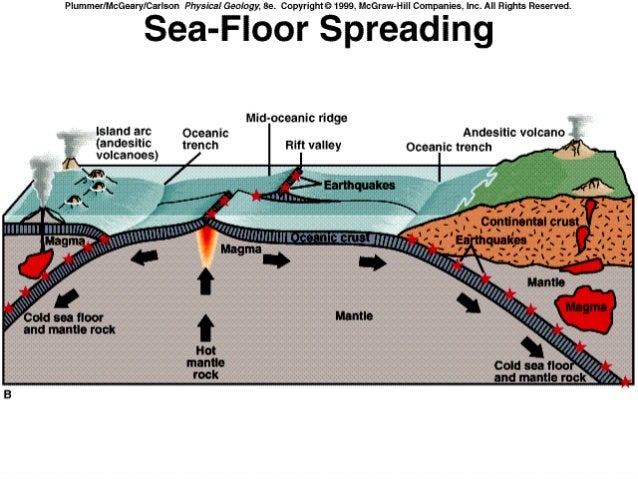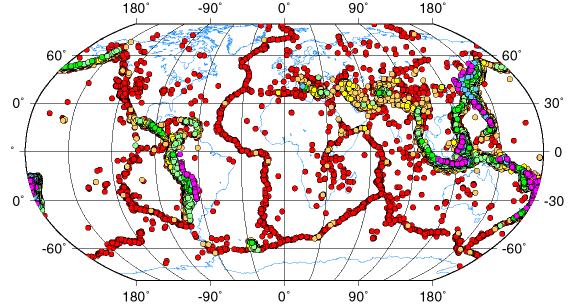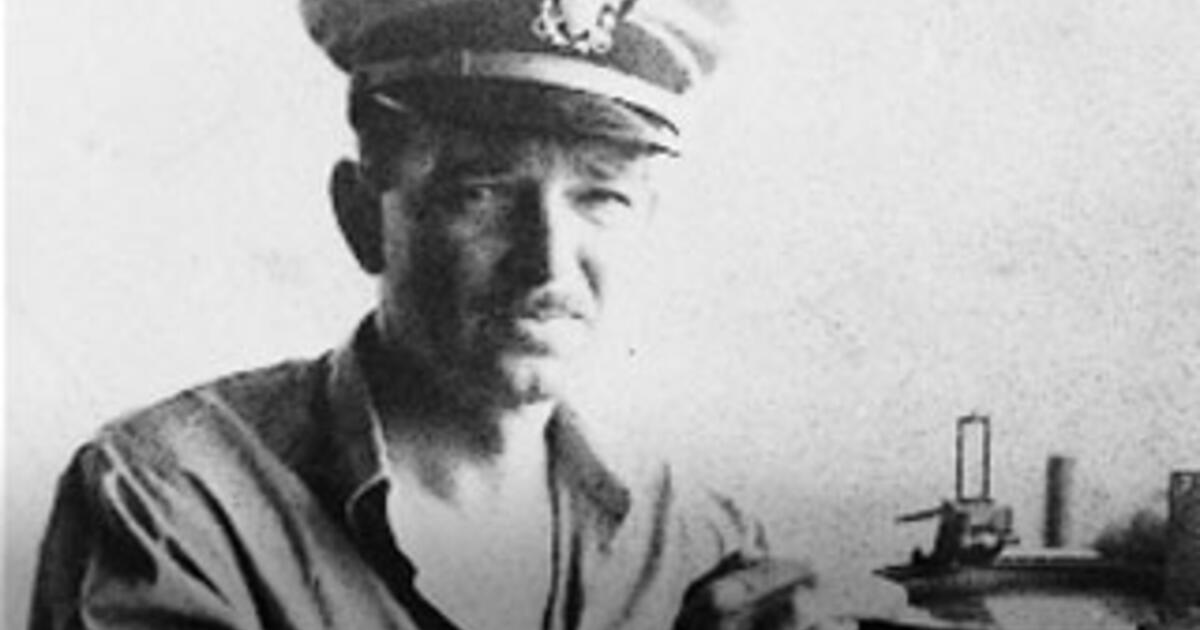The purpose of these studies was to understand the topography of the sea floor to find hiding places for both allied and enemy submarines.
How were earthquakes used to measure sea floor spreading.
Plate tectonics and the ocean floor.
Sea floor spreading during world war ii geologists employed by the military carried out studies of the sea floor a part of the earth that had received little scientific study.
Bathymetry the shape of the ocean floor is largely a result of a process called plate tectonics the outer rocky layer of the earth includes about a dozen large sections called tectonic plates that are arranged like a spherical jig saw puzzle floating on top of the earth s hot flowing mantle.
These age data also allow the rate of seafloor spreading to be determined and they show that rates.
Basalt the once molten rock that makes up most new oceanic crust is a fairly magnetic substance and scientists began using magnetometers to measure the magnetism of the ocean floor in the 1950s what they discovered was that the magnetism of the ocean floor around.
This idea played a pivotal role in the development of the theory of plate tectonics which revolutionized geologic thought during the last quarter of the 20th century.
The slip of one block of rock over another in an earthquake releases energy that makes the ground vibrate.
Providing strong evidence that the rocks on either side were deposited at the same time and that the rifts are spreading.
By the late 1920s seismologists were beginning to.
As upwelling of magma continues the plates continue to diverge a process known as seafloor spreading samples collected from the ocean floor show that the age of oceanic crust increases with distance from the spreading centre important evidence in favour of this process.
The magnetism of mid ocean ridges helped scientists first identify the process of seafloor spreading in the early 20th century.
Sea floor spreading is what happens at the mid oceanic ridge where a divergent boundary is causing two plates to move away from one another resulting in spreading of the sea floor.
Each seismic station in the network measures the movement of the ground at that site.
How are earthquake patterns used to provide.
That vibration pushes the adjoining piece of ground and causes it to vibrate and thus the energy travels out from the earthquake.
Seafloor spreading theory that oceanic crust forms along submarine mountain zones and spreads out laterally away from them.
As the plates move apart new material wells up and cools onto the edge of the plates.














































